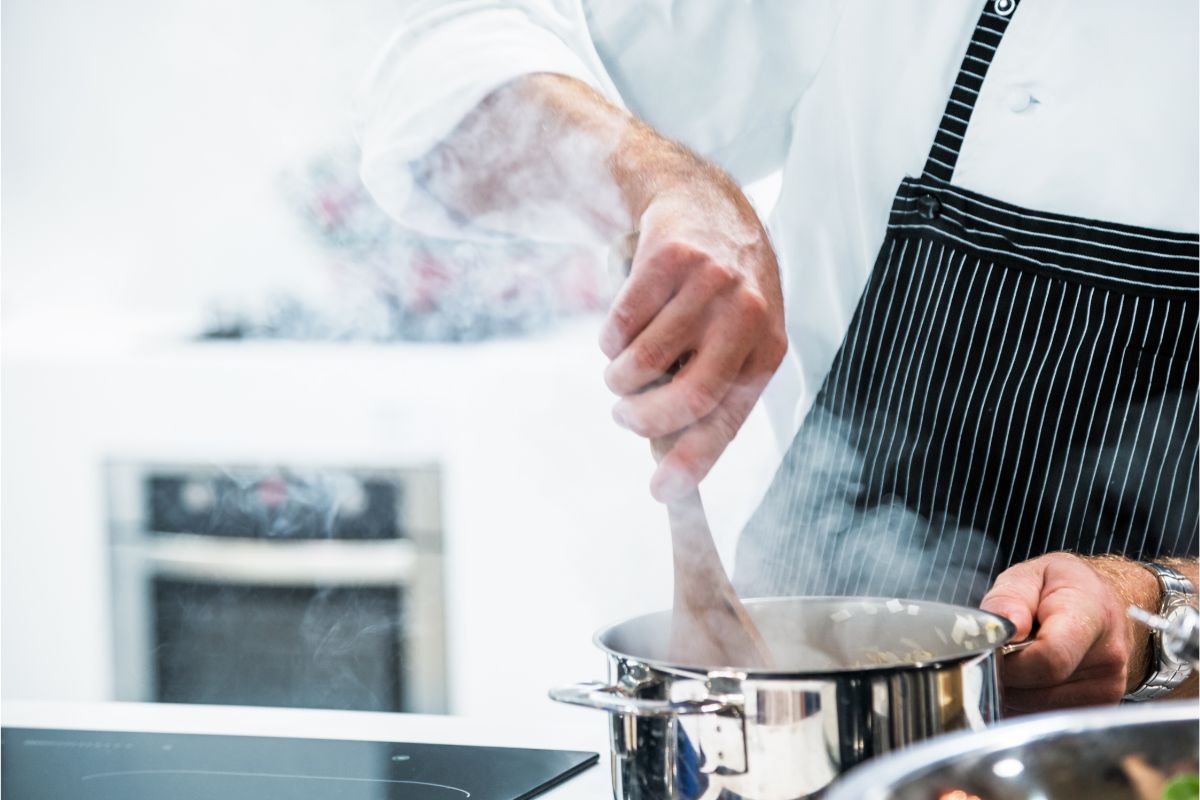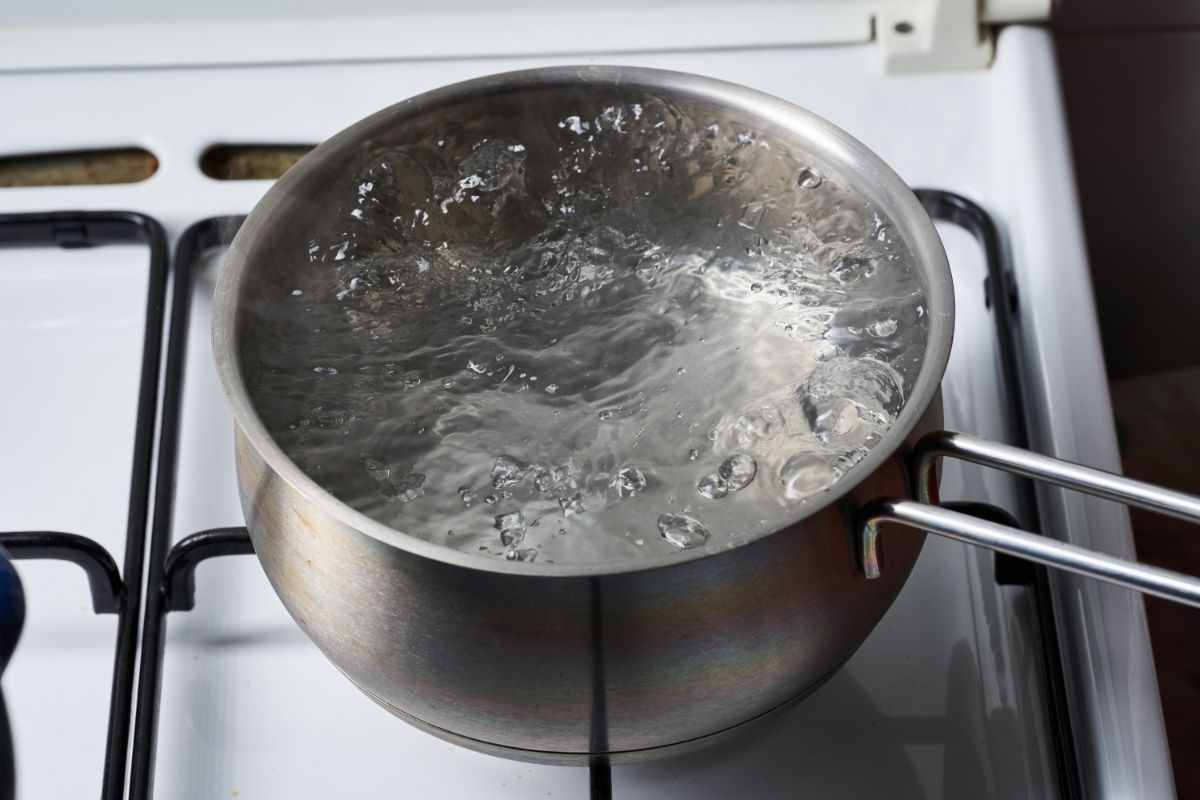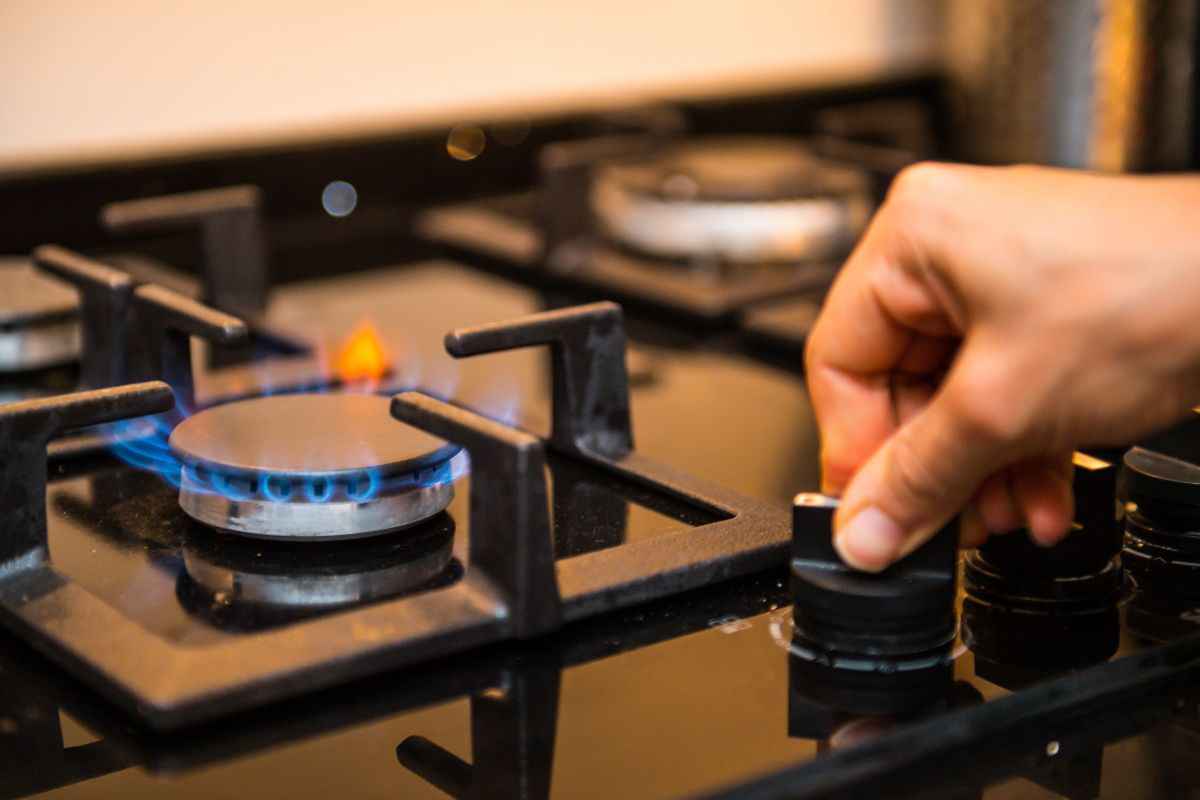If you cook at home, you may be wondering what temperature a simmer is on the stove. This is a commonly asked question as many people struggle to get the right temperature when it comes to simmering food.
This is a delicate cooking method that many people struggle with as you have to achieve a certain temperature to get a simmer. This can be very intimidating for home cooks who may not know exactly what to look for in a simmer.
It can be especially difficult to achieve different cooking methods when using a stovetop, as you do not have much control. As the majority of stoves only have low, medium, and high settings to choose from for temperatures.
Keep reading to find out how to achieve a simmer on a stove and what specific temperature creates a simmer.
Stove Temperatures That Create a Simmer
Simmering on a stove is a temperature used just below the boiling point for certain recipes. Because of this, simmering is usually around 185F to 205F on a traditional stove and doesn’t go much higher or lower during the cooking process.
Simmering is a very popular cooking method that allows the food you are preparing to become flavorful and rich. This is because the simmering process is a slow and gentle cooking method that really brings out different flavors.
This is why it is important for home cooks to understand what a simmer is and how to achieve it at home. Many recipes call for this specific cooking method and need to be followed in order to get the best results.

It can be difficult to get to the specific temperatures on a stovetop as most people do not have as much control when using this cooking method. Because of those, most people are able to achieve a simmer on a medium to low heat for most types of stoves.
You will need to keep an eye on the food you are preparing to visually see whether or not it is simmering or the temperature needs to be adjusted. Though you could also invest in a cooking thermometer so that you can test your food to see if it is at the right temperature.
This is a great option for those who may not be very confident in the kitchen just yet. As it takes all of the guesswork out of it and allows you to see exactly the kind of temperature that you need to achieve.
What Does Simmer Mean?
Simmering is the process where food is cooked on the stove at a medium temperature to gently cook the food. This is lower than boiling as it will not be as aggressive and will not cook the food down as quickly.
Many people may prefer the faster method of boiling the food they are preparing, but this will not create the same result. Simmering is used specifically to reduce foods and enhance the flavors that you have added.
For instance, if you were to make a homemade pasta sauce, you need to simmer the sauce for a long amount of time. This will help to bring out the sweetness of the tomatoes and the flavors of the seasonings that you have added.
Simmering condenses whatever food you are preparing, enhancing the flavors and creating a thicker end result than what you started with. Because of this, anyone who wants to become familiar with cooking at home will need to practice simmering.
Simmering will look different from boiling as it produces only small bubbles throughout the process. A simmer creates small and gentle bubbles and wisps of steam, but it would never bubble aggressively.
What Foods Require Simmering?
If you are learning how to cook at home, there are certain recipes that are going to require simmering. This is a very specific cooking method that is used for certain types of recipes that you will need to become familiar with.

Not every recipe is going to require this kind of cooking method as it is not suitable for a wide variety of foods. But there are specific kinds of recipes that you most likely will always need to simmer in order to achieve the best results.
This may take some time and practice in order to get it right so that you can confidently create these recipes.
Soups
One of the most common kinds of recipes that require simmering is a variety of soups. Soups often require simmering because you want to condense them and enhance the flavors that you have added.
Many people may think that you boil soups, but this is not usually the case as that is too aggressive a cooking method. Simmering allows the soup to gently evaporate and can dance, creating a thicker and richer result.
This will enhance any spices and herbs you have added as well as gently cook the ingredients like the meat and vegetables. Creating a rich and tender soup that is going to have all of the qualities that you are looking for.
Sauces
The majority of sauces will need to be simmered in order to condense them and enhance the flavor. Sauces typically start out very runny, but most people prefer them to be thicker, which is where simmering comes into play.
Simmering slowly cooks the sauce, allowing it to condense without burning it or giving it a harsh flavor. This also helps to bring out the flavors of the ingredients and create a flavorful sauce to accompany any meal.
Because sauces often need to cook down for a long period of time, simmering is very important for this, as it will not burn the sauce.
Jams and Preserves
Jams and preserves recipes often require simmering in order to gently cook down the fruit and condense it. Any other kind of cooking method would most likely be too harsh and result in the jam or preserves caramelizing or burning.

The simmering process cooks down the fruit and allows it to naturally start to thicken and become spoonable. This is important as fruit contains a lot of water that will need to be cooked down in order to create a spreadable jam or preserve.
Simmering and Boiling Are Different Cooking Methods
Simmering and boiling are often confused with one another, but they are two entirely different cooking methods. As we have mentioned, simmering is a gentler process where food is cooked for a long period of time, creating only small bubbles and a little bit of steam.
Boiling is far more aggressive and is going to create a lot of steam and very large bubbles that appear rapidly. This is often done at a much higher temperature and does what simmering does but faster and more aggressively.
It is not ideal for a lot of recipes that require simmering, as boiling can reduce recipes too quickly, not allowing the flavors to develop. It is also very likely to burn food and result in it not tasting quite right.
Final Thoughts
If you want to achieve a simmer, you will need to have a temperature of around 185F to 205F. These are the ideal temperatures that will allow you to achieve a gentle simmer to condense the food and improve the flavor.
Anything higher than this is going to create a boil, which is not what you want if the recipe requires simmering. As simmering is much more gentle and is going to help condense and enhance the flavor of whatever you are cooking.
